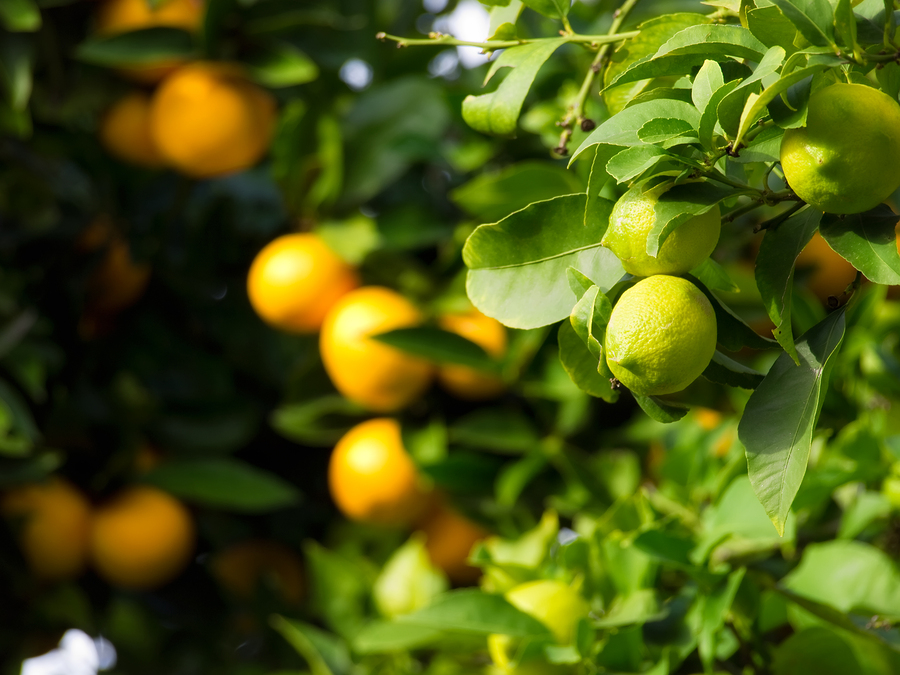Oranges and Lemons!
Yes! If you were in China or South East Asia you would expect a question on citrus fruit.
I have seen them growing in Northern Italy but this person has his plants in Southern California. That is the name of the game. You can get most plants to grow almost anywhere as long as you provide close to the right conditions. Not really a strange question after all and one which we should be used to in this country with its diverse flora. Plant hunters have been bringing us new plant species for the last 300 years and continue to do so. Our nursery trade relies for its success, in part, on that supply of new plants and plant breeders. In some quarters it is very fashionable to have the latest introductions and always has been.
The question? My lemons trees fruit well, my orange trees are empty? How frustrating can that be?
You rarely see citrus fruit trees growing here except in protected circumstances of the greenhouse or conservatory, where temperatures should not be allowed to fall below 5 degree C. Moved out during the summer months to a sheltered spot, they get the benefit of full sun. They are evergreen with tough glossy leaves, very much like the camellia and so are useful plants to have about the house.
Remove any dead leaves in winter to reduce the incidence of disease. Re-pot in February. Prune young plants in March and start watering more regularly. In April sweet smelling fragrant white flowers appear. Give a light potash/phosphate fertilizer and move the plants out in May when the risk of frost is passed. With regular feeding and watering they should fruit well in a good John Innes Compost No. 3.
Citrus fruit varieties, and there are many,originated from three species and now we have oranges, lemons, limes, grapefruit, plus types of mandarins like satsumas (from Satsuma the Japanese province in Japan), tangerine (from Tangiers) and clementines (from Oman).
Use grafted plants because they produce fruit earlier: more reliable. You may have to wait 5 to 8 years even in these circumstances. Stick to reliable varieties. For lemons either “Meyer” or “Four Seasons” or the orange varieties “Calamondin” or “Valencia”. You might even try an orange and lime cross variety “Bergamot”.
The reasons for trees not fruiting? Well we’ve said immature plants, a measure of boron might help? Not enough sunlight, flowers not being pollinated – here we could shake the plants daily to shed the pollen in the flowers. They are self pollinators! It’s a bit like spraying tomatoes and runner beans in warm weather. Not only is it the physical action but producing the moist atmosphere suitable for the transfer of the pollen that fertilises the flowers – a better crop? If you stand your pots on pebbles with a covering of water that helps humidity. Cold temperatures kill flowers or cause the young fruits to drop off. Or it may be a very cold spell after a very warm period. Try throwing a blanket over the tree if cold weather is about.
Improper watering, pruning and fertilizer regimes need attention. Too much nitrogen promotes growth at the expense of the fruit. Structure prune when the tree is young before the flowers appear. These are produced on the ends of branches. Look for an open canopy removing dead, dying and cross branches. Then take out complete branches to allow in the light to allow a dappled effect. Sounds like pruning apples and pears to me: the same principle. You remove new growth at the expense of fruit and flowers. Getting the balance right is important. Now’s the time to get into the garden for all those pruning jobs with sharp implements! Good Luck!
David Mitchell
Latest posts by David Mitchell (see all)
- Oranges and Lemons! - February 15, 2014





















